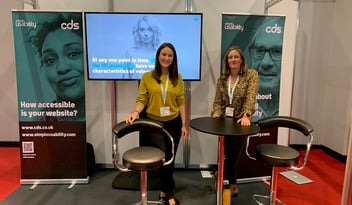Communicating effectively has never been more important
Posted in Inclusivity and Accessibility, Experience Transformation
March 2020
1 minutes reading time
I was reading an article the other day about the fact that the message about Coronavirus is not reaching sections of society and it got me thinking about how you meet the challenge of having to engage an entire nation in one all-encompassing message.
Since the UK went into lockdown, there have been many reports celebrating the return to traditional and trusted news sources, or highlighting the fact that the Prime Ministers’ evening update has become one of the most-watched TV events in history.
Whilst these facts are staggering and reflect the unprecedented times we find ourselves in, we shouldn’t forget that these stats do not reflect the entirety of the UK.
The research we conducted last year, highlighted that applying a broad-brush approach to communications risks alienating people – particularly the most vulnerable in society.
A communications plan will usually be designed with a specific audience (or a set of audiences) in mind, making it relatively simple to create a campaign that can be effectively delivered and measured. However, the messaging around Coronavirus needs to be communicated with everybody in the UK. This means having to design and distribute messaging that will be understood and received by a huge and diverse group of people. For example, how do you reach the 11% of people in the UK who don’t use the internet, or the 1.5% who don’t speak English well, or the 25% who don’t have confidence in their local police?
A hands-on, community-focussed approach feels like the right way for the government to reach out to those hardest to reach. Perhaps tapping into the growing volunteer community who are bolstering front-line services at foodbanks and the NHS, or providing telephone support to the most vulnerable people could be an effective alternative route to also deliver key information.
Or maybe a targeted door-drop at a time when people are definitely going to be at home (and probably a bit bored if they’re anything like me) would be a good way to get the necessary information to people.
Whatever the adopted approach, the key to effective communication is understanding. When you understand the people you are trying to communicate with, you can design communications that will be digested and understood by the audience you’re trying to reach.
Understand more about your audiences' needs with experience insight consultancy


